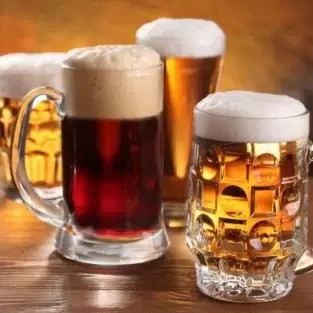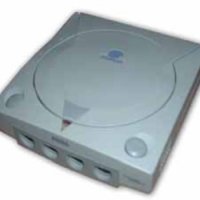Copy Link
Add to Bookmark
Report
HOMEBREW Digest #0706

This file received at Mthvax.CS.Miami.EDU 91/08/21 03:11:43
HOMEBREW Digest #706 Wed 21 August 1991
FORUM ON BEER, HOMEBREWING, AND RELATED ISSUES
Rob Gardner, Digest Coordinator
Contents:
Old Peculier (Ifor Wyn Williams)
Brewthings in New England (Daniel S Robins)
Davis Water (HBD 704 and 705) (Jean Hunter)
Re: Malting and enzyme destruction... (larryba)
Gelatine Finings; Calcium & Klages (larryba)
Re : Malt extracts (Conn Copas)
ss pot (Russ Gelinas)
Single vs. 2 stage fermentation (cookson)
Kegging (cookson)
mini-kegs, SO2 (hersh)
mini-kegs, SO2 (hersh)
Lagering problem ("Jack D. Hill")
HB store in NJ ("KATMAN.WNETS385")
Why is my beer so sweet? (Frank Tutzauer)
Sam Adams Wheat (hersh)
Sam Adams Wheat (hersh)
gelatine finings (Bryan Faubion)
re: "lager" style Ales... (Todd Enders - WD0BCI )
Liquid Yeast Behavior (Martin A. Lodahl)
Lauter Tun Set Up (Kurt Swanson)
Cheap(er) SS Stock Pots ("Justin A. Aborn")
Send submissions to homebrew%hpfcmi@hplabs.hp.com
Send requests to homebrew-request%hpfcmi@hplabs.hp.com
[Please do not send me requests for back issues]
Archives are available from netlib@mthvax.cs.miami.edu
----------------------------------------------------------------------
Date: Tue, 20 Aug 91 11:41:37 BST
From: Ifor Wyn Williams <ifor@computer-science.manchester.ac.uk>
Subject: Old Peculier
Has anybody successfully brewed a beer that closely resembles
Theakstons Old Peculier? This is one of my favourite beers and I wish
I knew the secret.
I know about Dave Line's extract recipe, but it doesn't come close to
the Real Thing. I've formulated and tried several all-grain recipes,
but none matched Old Pec. The brews were either too stout-like, too
dry or had the wrong kind of sweetness. None had the distinctive Old
Peculier taste.
Does anybody know how Theakstons do it?
Thanks in anticipation,
Ifor.
------------------------------
Date: Tue, 20 Aug 91 8:34:24 EDT
From: Daniel S Robins <dsrobins@magnus.acs.ohio-state.edu>
Subject: Brewthings in New England
I am going to be heading to New England in the near future and will
be interested to visit some places of interest with beer as a
theme. Specifically, I will be spending a day in Framingham, MA
and a weekend plus in Conway, NH. Be they brewpubs,
microbreweries, or homebrew supply shops, I would appreciate any
suggestions.
Dan Robins
Department of Chemistry
The Ohio State University
INTERNET:dsrobins@magnus.acs.ohio-state.edu
------------------------------
Date: Tue, 20 Aug 91 09:17:32 EDT
From: Jean Hunter <MS3Y@CORNELLA.cit.cornell.edu>
Subject: Davis Water (HBD 704 and 705)
If you are wondering how to brew good beer with Davis water, why not consult
a widely known brewing teacher and brewers' yeast expert right on campus?
Prof. Michael Lewis in the food science department may have some pointers
for you. If he does - share! Cheers -- Jean
"If all else fails, read the directions. If the directions don't help,
ask an expert. If the expert can't help you, then you weren't so dumb
after all."
------------------------------
Date: Tue Aug 20 07:06:05 1991
From: microsoft!larryba@cs.washington.edu
Subject: Re: Malting and enzyme destruction...
One thing that has bothered me for a long time: Miller, et.al. cautions
against mashing at too high a temperature as that will destroy the enzymes
and give poor yeild (or high dextrines, or what ever you happen to believe in)
The thing that bugs me is information like what Darryl said about the kilning
process at Pilsner Urquell: they kiln at 178f for 20 hours!!!. Even Miller,
after talking about enzyme activity vs temp, then goes on to recommend
"kilning" lager malt in an oven at 212f for 2 hours before using it to make
Vienna Lager. Jeeze, if Miller and Papazian believe that enzymes are killed
in Mash-Out at 168f, then someone is on drugs.
Can anyone explain? Is it the availability of H2O? The acidified Mash?
Could it be that Mash-out is an achronistic step in mashing?
------------------------------
Date: Tue Aug 20 07:32:14 1991
From: microsoft!larryba@cs.washington.edu
Subject: Gelatine Finings; Calcium & Klages
Conn V Copas asks about Gelatine finings:
My beers never satisfactorily cleared (kegged and usually drunk within
6-8 weeks after conditioning) until I started adding gelatine. I dissolve
1/4 tsp of gelatine in 1 cup of boiling water and just dump it into the
open keg after racking the beer. I have also done this directly into the
secondary when lagering. Usually within a week the beer is fairly
clear. Two to three weeks later it is bright.
I use Knox unflavored gelatin, about $.80/oz at local supermarkets. It
appears to be a lifetime supply...
Darren Evans-Young asks about Calcium and Klages:
a. use calcium sulphate or cloride. The calcium is needed for certain
enzymatic reactions that causes the acidification/buffering of the
mash. If you have soft water, 8 gm of Gypsum will add ~75ppm calcium
to 7 gallons. Miller has a good discussion of water treatment/solutions.
John Polstra had a good summary in HBD #671 and #672
b. I have used klages and obtained good results. If you are making a
pale ale (vs an brown or IPA), you might need some color (10%
munich malt, perhaps) since the klages is much lighter than English
Pale Ale, Mash the same.
------------------------------
Date: Tue, 20 Aug 1991 10:47:25 +0000
From: Conn Copas <C.V.Copas@loughborough.ac.uk>
Subject: Re : Malt extracts
Thanks also from me for the post on extract analysis. Explains lots of
things, like why mashed brews ferment so much faster than extract brews,
and why an extract brew of SG 50 can have a similar amount of malt flavour
to a mashed brew of SG 30. Re nutrients, as well as ammonium salts as a
source of nitrogen, brewers might also wish to consider vitamin B
energisers, which can also be deficient. Combination nutrient/energiser
mixtures are available here commercially, and they have cured any of my
stuck fermentations. Bear in mind that the brew may attenuate further than
what you are used to. Most of the commercial extracts here give about
one-seventh unfermentables, which is not enough for me.
Another interesting aspect of extracts is their speed of clarification.
Edme's diastatic liquid extract (DMS), for example, yields an almost
perfectly clear liquid after boiling and cooling. The end result is that,
with a good flocculating yeast, it is possible to have clear beer 2 days
after primary fermentation, without using finings.Something to do with the
protein content maybe ? Alternatively, diastatic extracts are manufactured
by condensing at relatively low temperatures under vacuum. Could this
method have advantages for clarity ?
Lastly, another part-mythical creature : the malt extract 'tang'. Fact or
fiction ?
Conn V Copas tel : (0509)263171 ext 4164
Loughborough University of Technology fax : (0509)610815
Computer-Human Interaction Research Centre
Leicestershire LE11 3TU e-mail -
G Britain (Janet):C.V.Copas@uk.ac.lut
(Internet):C.V.Copas%lut.ac.uk@nsfnet-relay.ac.uk
------------------------------
Date: Tue, 20 Aug 1991 11:35:11 EDT
From: R_GELINAS@UNHH.UNH.EDU (Russ Gelinas)
Subject: ss pot
My new 10-gallon stainless pot arrived at the height of hurricane
Bob. Pretty funny watching the delivery guy trying to handle this big
box in the wind and driving rain. Anyway, I've got it now, it's *big* and
solid, and I can't wait to use it. Is there anything I should do to it
before I cook in it, other than just wash it out well?
Russ G.
------------------------------
Date: Tue, 20 Aug 91 11:35:58 EDT
From: cookson@mbunix.mitre.org
Subject: Single vs. 2 stage fermentation
I've just started by second batch of homebrew. Both times I've used a
5gal glass carboy as my only fermenter, first with a blow tube, then
an air lock after a couple of days. I've been wondering a couple
of things. BTW, both batches were/are ales.
1. Should I rack to another carboy to isolate the beer from the trub,
once the really active fermentation has subsided??
2. My starter kit came with the carboy and a large (7gal?? maybe 10)
plastic bucket. Is there a reason I'd want to use this as my primamry
and then rack to a carboy??
Thanks,
Dean
------------------------------
Date: Tue, 20 Aug 91 11:45:00 EDT
From: cookson@mbunix.mitre.org
Subject: Kegging
I've been wondering, is kegging really worth the starting expense??
The Cat's Meow lists a couple of places with complete Cornelius
systems in the $150-$175 range. Is that a good price?? How long
will homebrew (ale) keep in a keg? What's the collective HBD
wisdom on these questions?
Thanks,
Dean
| Dean Cookson (Opinions? What opinions??) dcookson@mitre.org |
| The MITRE Corp. Unix Systems Group "It's like teaching teflon, |
| M/S B020 Burlington Rd. Bedford Ma. 01730 everything you say to her |
| 508-851-9341 (H) 617-271-3642 (W) just bounces off" -Mike Hess |
------------------------------
Date: Tue, 20 Aug 91 12:01:41 EDT
From: hersh@expo.lcs.mit.edu
Subject: mini-kegs, SO2
Eric Pepke, why don't you just remove the rubber grommet from the keg, shake
the plastic bung out, reinsert it in the grommet and then after filling the keg
re-insert the grommet (& bung) into the top of the keg.
This is how I used to re-seal those 5 liter mini's and doing it that way they
always held pressure (instead of jamming in one of those gravity taps which
yields a leaky seal).
Ted S. writes :
>I've never heard that SO2 can be produced by fermentation and I'm quite suspect
of this claim.
Well with lager yeast SO2 is a by-product of fermentation for some strains (you
can smell it mixed in the CO2 released), so it could be possible for wine
yeasts too.
- JaH
------------------------------
Date: Tue, 20 Aug 91 12:01:41 EDT
From: hersh@expo.lcs.mit.edu
Subject: mini-kegs, SO2
Eric Pepke, why don't you just remove the rubber grommet from the keg, shake
the plastic bung out, reinsert it in the grommet and then after filling the keg
re-insert the grommet (& bung) into the top of the keg.
This is how I used to re-seal those 5 liter mini's and doing it that way they
always held pressure (instead of jamming in one of those gravity taps which
yields a leaky seal).
Ted S. writes :
>I've never heard that SO2 can be produced by fermentation and I'm quite suspect
of this claim.
Well with lager yeast SO2 is a by-product of fermentation for some strains (you
can smell it mixed in the CO2 released), so it could be possible for wine
yeasts too.
- JaH
------------------------------
Date: Tue, 20 Aug 91 12:01:24 EDT
From: "Jack D. Hill" <jdhill@BBN.COM>
Subject: Lagering problem
My first attempt at a lager seemed ready to bottle this weekend, but in
a short time it became apparent I was wrong. On June 10th I brewed the honey
lager from CJHB. I pitched with Wyeast Pilsner. Advice I had received from a
local homebrew supply house said he had good success by waiting for initial
fermentation to begin at room temperature before refrigerating at 55 degrees.
After the bulk of the initial fermentation is complete, transfer to a carboy
and lager at 45 degrees. This I did, two weeks in the primary at 55 degrees and
two months in the secondary at 45 degrees. The primary had all the activity you
would expect from an ale. After I had transfered to the secondary, I could see
a healthy rate of tiny bubbles running up the side of the carboy, the
fermentation cap riding high and occasional burps from the fermentation lock.
The krausen was thick.
Last week I noticed the fermentation cap riding low and a marked
decrease of bubbles. The krausen was thin. Bottling seemed to be in order.
Yesterday, I brought up the carboy and let it settle while I prepared and
cleaned the bottles. After an hour I was getting and incredible amount of
fermentation activity. Obviously it wasn't ready to bottle. I put the carboy in
the basement (where it is cool) to wait out this second spat of activity.
What should I do? Should I put it back in the fridge in a few days,
immediately or should I let it finish its fermentation at room temperature?
Thanks,
Jack Hill
------------------------------
Date: Tue, 20 Aug 91 17:18 GMT
From: "KATMAN.WNETS385" <6790753%356_WEST_58TH_5TH_FL%NEW_YORK_NY%WNET_6790753@mcimail.com>
Subject: HB store in NJ
Date: 20-Aug-91 Time: 01:17 PM Msg: EXT01706
Hello,
I must correct Paul Chisolm who states there are no home brew stores in NJ.
There is at least one. It is called Wine Hobby (908-874-4141) and is on Route
206 in S. Somerville/Hillsborough. They are open from 10-5 and stay open until
8 on Thursdays. Call to check weekend hours. They have both wine and beer
supplies, and while not the biggest store on earth, they have or can get what
you need. There is also a home brew only (virtually no wine specific supplies)
store at 20th and Sansom in Philadelphia (forget the name) and a place in NY
City called Milan Home Wine and Beer (212-226-4780) at 57 Spring St. in
Manhattan.
Also, since the USA made it legal to brew beer (in 1976?) wouldn't it then be
legal in NJ to brew beer? Or has it been given to each state to make its own
laws? Is Utah a dry state? If so, can one brew beer there at home?
Lee Katman == Thirteen/WNET == New York, NY
=Do not= use REPLY or ANSWERBACK, I can not receive mail in that fashion.
Please send all mail to
INTERNET katman.wnets385%wnet_6790753@mcimail.com
OR
MCIMAIL EMS: wnet 6790753 MBX: katman.wnets385
------------------------------
Date: Tue, 20 Aug 91 13:59 EDT
From: Frank Tutzauer <COMFRANK@ubvmsc.cc.buffalo.edu>
Subject: Why is my beer so sweet?
Ok, it's time to help the novice. I'm getting ready to brew my third
batch, but before I do I want to correct the problems of the first two
batches. To wit: The beer is too sweet. In fact, the first batch was so
sweet as to be undrinkable. (It's not a total waste. I've been mixing it
with store bought, which cuts the sweetness of the homebrew and improves the
body and taste of the store bought.)
Here's what I did. For the first batch, I followed the beginner's
chapter in TCJoHB, namely, hopped extract, yeast, and water. Not knowing one
extract from another, I chose American Eagle Amber (hopped), mainly because
Alternative Beverages said something to the effect of, "A good extract,
unaffected by the price increases of the English extracts." I boiled two cans
of the extract in 2 gallons of water for 15 minutes, put it in the carboy with
enough water to make 5 gallons, cooled to 78 degrees, and pitched 14 grams of
dry Whitbread ale yeast. O.G was 1.033. I then attached a 1" blow off hose,
and moved the carboy to the basement. Wouldn't you know it, but Buffalo
experienced a heat wave right when I was ready to brew, so fermentation temps
were between 75 and 78 degrees throughout (it was the coolest place in the
house). Anyway, within a few hours, the fermentation was going great guns
(which, incidentally, is a cool thing to watch). In two days, the kraeusen
had fallen back into the beer and I attached an air lock. Two days later, the
glubs had ceased and the gravity had fallen to 1.012. I checked the next day
and the next and got 1.012 both times. This seemed like a short fermentation
to me, but I figured it was the heat, decided to not worry, and bottled.
Two weeks later, I opened a bottle. It wasn't carbonated enough,
although it was coming along, but geez louise was it sweet. Almost as sweet
as the wort. Charlie said I could expect a beer with a "sweet palate," but
this was ridiculous.
The second batch, an English pale ale, went like this: 1 can Edme
English bitter extract (hopped), 2 lb. light DME, 1/2 oz Kent hop pellets
(alpha = 4.7) for finishing, 14 g Edme ale yeast pitched at about 80 degrees.
O.G. 1.031. Fermented for 8 days at 72 to 76 degrees. F.G. 1.011, constant
for the final three days of fermentation. This beer is at least drinkable,
but it's still a little sweet for my tastes. I know some people like a little
residual sweetness in their beers, but I like mine downright bitter. In fact,
underneath the sweetness you can tell there is a good beer lurking here, but
like I said, I prefer more bitterness.
My next batch is going to be an Irish dry stout. The kit came with a can
of Munton's hopped export stout extract, 3 lbs. dark DME, 1 cup black patent,
1 cup flaked barley, 1 lb. of roasted barley, 7 g. of M&F ale yeast, and 1 oz.
of Bullions hops, half for bittering and half for finishing. What can I do to
make sure that this batch doesn't turn out too sweet? My novice-like
hypotheses for what went wrong the last times are:
1. Crummy extract.
2. Not hopped enough.
3. Too high a fermentation temperature, producing these famous "esters"
I've been reading so much about. (I suppose the nose and taste might be
described as "fruity" but I think "sweet" is a better adjective. There
certainly are no identifiable fruit scents/tastes--no raspberry, banana, pear,
smells or anything like that.)
4. I screwed up the yeast somehow, so not everything fermented. (The
yeast was not dead, given the gravity drop and the fact that the beer is
carbonating, although SLOWLY. Charlie says it takes 7 to 14 days. Mine's
taking about three weeks. Also, I think fermentation was complete, given the
constant gravity readings and the fact that I don't have any gushers, at least
as of yet.)
5. An infection. I don't think so. I was pretty careful about
sanitation. I've had practice helping my wife with her canning. (Unless the
food is acidic, there's nothing to prevent bacterial growth, so the canning
people are far more paranoid about sanitation than homebrewers. I found the
level of sanitation Charlie asked for to be an easy thing to carry out.)
Is the remedy something as easy as adding more hops? What should I do?
(Sorry for the length of this post, but since I'm not sure what in my
technique is responsible, I wanted to include all the details.)
Thanks.
--frank
------------------------------
Date: Tue, 20 Aug 91 14:57:27 EDT
From: hersh@expo.lcs.mit.edu
Subject: Sam Adams Wheat
Mike Zentner says:
>Comparing it to a substantial amount of other wheat beer tasted from
>German brewers, it was very one-dimensional (to me).
Perhaps Mike, but compare it to most other wheat beers brewed in
America. American Wheats have sort of become a category of beer on
their own because they typically lack any of the clove character
found in German Wheat Beers. Essentially they are more like lager
counterparts than like true Wheat beers. While the Sam Adams may or
may not stand up to Germany's best Wheats, it is still much more
like the German Wheats than other Wheat beer produced in America.
So at least you could give it a kudo for moving in the right
direction.
- JaH
PS Boy this is a tough crowd :-)...
------------------------------
Date: Tue, 20 Aug 91 14:57:27 EDT
From: hersh@expo.lcs.mit.edu
Subject: Sam Adams Wheat
Mike Zentner says:
>Comparing it to a substantial amount of other wheat beer tasted from
>German brewers, it was very one-dimensional (to me).
Perhaps Mike, but compare it to most other wheat beers brewed in
America. American Wheats have sort of become a category of beer on
their own because they typically lack any of the clove character
found in German Wheat Beers. Essentially they are more like lager
counterparts than like true Wheat beers. While the Sam Adams may or
may not stand up to Germany's best Wheats, it is still much more
like the German Wheats than other Wheat beer produced in America.
So at least you could give it a kudo for moving in the right
direction.
- JaH
PS Boy this is a tough crowd :-)...
------------------------------
Date: Tue, 20 Aug 91 09:53:02 PDT
From: uunet!tc.fluke.COM!bryanf@uunet.UU.NET (Bryan Faubion)
Subject: gelatine finings
In HBD #705 Conn V Copas writes:
>Can't say that I have read Miller, but ... Even the late, great Dave Line
>had his moments. For example, recommending gelatine as a fining agent (has
>anyone ever found this to work) ? Or the occasional 'any yeast will do'
>philosophy.
I have recently begun using gelatine in my ales with great success. I
have been brewing brown ales using Whitbread dry ale yeast. None of my
brews cleared very well before about two months in the keg (and the
contents virtually gone). I now add about a half teaspoon to the five
gallons when I keg (disolved in hot water first, of course). The beer
turns out crystal clear after about a week of conditioning.
Bryan Faubion
bryanf@tc.fluke.COM
------------------------------
Date: Tue, 20 Aug 1991 15:20:42 -0500
From: Todd Enders - WD0BCI <enders@plains.NoDak.edu>
Subject: re: "lager" style Ales...
In HBD # 703, GC Woods <gcw@garage.att.com> writes:
>Does anyone have an extract recipe for making a "lager style" beer
>with ale yeast. I've been in brewpubs which do not have the
>facilities/capacity to brew lagers, but will make a similar brew using
>ale yeast.
Although I haven't tried the recipe below, it should give you an
idea of where to start:
Lageresque Ale
4# (1 can) Alexander's light unhopped malt extract (syrup)
1.5# Light dried malt extract (DME)
5 AAU's of your favourite bittering hops (ex.: 1/2 oz. of 10% alpha
chinook)
1.5 oz. Hallertauer or Tetnanger hops for finishing
Ale yeast (Wyeast American Ale #1056, aka Sierra Nevada *strongly*
recomended)
Production:
Disolve the extracts in 5 gal. of brewing water. Bring to boil,
After 15 mins, add bittering hops. Boil 60 mins total. Turn off heat
and add finishing hops. Cool as rapidly as possible to 60-70F. Rack to
fermenter, top up to 5 gal., pitch yeast, relax, etc.
Hints; Conduct the fermentation at as cool a temp as you can muster, to
keep the esters down. If you can, rack the wort off the trub before the
fermentation really gets started (i.e. let it settle out for 4-6 hours, then
rack, but pitch the yeast *first* to avoid nasty supprises). Use an ale yeast
that is "clean" (i.e. produces few esters). Reportedly, Wyeast #1056 (American
Ale) is supposed to be the best yeast in this regard. You can also culture
this strain (or one with a *very* similar flavour profile) from Sierra Nevada
ales. Boil the full volume of your wort. The more dilute wort gives better
hop utilization, and helps avoid carmelization of the wort. After bottling
or kegging and subsequent carbonation, let the brew "lager" in the refrigerator
for 4-6 weeks. Hope this helps!
Todd
==========================================================================
Todd Enders - WD0BCI ARPA: enders@plains.nodak.edu
Computer Center UUCP: uunet!plains!enders
Minot State University or: hplabs!hp-lsd!plains!enders
Minot, ND 58701 Bitnet: enders@plains.bitnet
==========================================================================
------------------------------
Date: Tue, 20 Aug 91 10:19:58 PDT
From: Martin A. Lodahl <pbmoss!malodah@PacBell.COM>
Subject: Liquid Yeast Behavior
To my surprise, no one has yet answered the questions Greg Pryzby
asked in HOMEBREW Digest #704:
>I started the liquid yeast about 26 hours before I needed it. The package
>was HUGE (I don't think it could have gotten bigger.)
The amount of time required to swell the packet can vary widely,
running from just a few hours (for a very fresh packet in a warm
environment) to several days. A couple of years ago Wyeast
experimented with a new packet design, and for several months
(before Pete Soper's valuable work in collecting anecdotal data over
HBD pinpointed the problem) people all over the country experienced
little explosions ... They went back to the original design which
is somewhat stronger.
> ... I pitched the
>yeast at 70F and waited for the fermentation to start. Well, about 48
>hours later the fermentation started. But it has been VERY slow. With dry
>yeast, the fermentation started within a few hours and was vigorous for a
>few days and done between 3-5 days. This batch looks like it is going to
>take alittle (or alot) longer.
>
>Is this typical for liquid yeast? A slow start (about 48 hours to start)?
>Slow fermentation (some bubbling)?
Given the circumstances you name, it's to be expected. You can
pitch directly from the packet, and I've done so successfully, but
that's underpitching to a significant degree. It's much safer to
culture the yeast cells up to a much larger number before pitching.
I usually start the packet on the Wednesday or Thursday before I
brew, anticipating pitching on Sunday. After the packet swells, I
boil 4 Tbsp. DME (dry malt extract) in 2 cups of water for 20
minutes, adding a pinch of yeast energizer. After cooling in a
water bath down to the 70's or so, I sanitize the swelled packet,
carefully open it, and pour into the starter solution I've just
made. Usually it's at high kraeusen by the next day, and if it
looks like the kraeusen will fall before it's time to pitch, I make
another batch of starter that's twice as large, and pitch the first
one into it. I always get a fast start from that method. However,
in the temperature range you mention, I've usually gotten a pretty
fast start even just pitching the packet contents, without
reculturing.
Another reason for its apparently slower action is that dry yeast
have hardships to overcome that liquid colonies never meet. Many
yeast cells die from the rigor of being kiln-dried, and rehydration
(especially in a sugar solution) subjects the yeast to severe
osmotic stress. For these reasons, compromises must be made in
selecting the yeast strains, with an emphasis on "survivability" and
vigor, often to the detriment of the qualities of the finished beer.
That's why dry yeast seem to "hit the deck running", while liquid
cultures (usually) seem more relaxed in their action.
> .... And why liquid yeast is preferred?
>Or will I know that when the batch is tasted?
You'll know. As an experiment, I tried dry yeast (Lallemand, which
is seeing wide application in brewpubs just now) in my last batch.
My next batch will use either a liquid culture or a strain from my
own lab cultures.
= Martin A. Lodahl Pacific*Bell Systems Analyst =
= malodah@pbmoss.Pacbell.COM Sacramento, CA 916.972.4821 =
= If it's good for ancient Druids, runnin' nekkid through the wuids, =
= Drinkin' strange fermented fluids, it's good enough for me! 8-) =
------------------------------
Date: Tue, 20 Aug 91 19:23:49 CDT
From: kswanson@casbah.acns.nwu.edu (Kurt Swanson)
Subject: Lauter Tun Set Up
To those of you using the bucket within a bucket lauter tun (w/the
hundreds of drilled holes), what kind of buckets do you use? I have 2 of the
ubiquitous 6.7 gallon plastic food pails. They sit about 6 inches apart, no
need to cut off the flanges. So I thought I'd pick up an even more common 5
gallon, of the same design. I cut the flanges off, but even then the bottoms
fit about 3 inches apart. I have since become an expert at spotting these
pails - they are everywhere, and have noted that *ALL* have exactly the same
diameter - only differing in height. So what's the story? Keep looking? Deal
with the inefficiency & increased sparge time of the 3 inch difference? Some
other idea? (no picnic cooler stories please)
- --
Kurt Swanson, Dept. of Electrical Engineering and Computer Science,
Northwestern University. kswanson@casbah.acns.nwu.edu
------------------------------
Date: Tue, 20 Aug 91 10:37:29 EDT
From: "Justin A. Aborn" <hplabs!ames!harvard!BBN.COM!jaborn>
Subject: Cheap(er) SS Stock Pots
If anyone has been thinking about buying a stainless steel stock
pot, the best deal I have seen is available from Superior
Products Mfg. Co. of St. Paul, Minnesota until October 11, 1991.
Superior Products is a restaurant supply place that also has a
lot of great beer dispensing equipment. Get their catalog.
The right thing to get is a Vollrath Stainless Steel Stock Pot
with cover. I have the the 24 quart model, and it is everything
anyone could want in a stock pot. It's built. I will be passing
this thing down to my great grand children after it has happily
brought thousands of gallons of beer into the world.
The special sale catalog I received says the following (I will
only list the part number, volume, and sales price (the list
price is a lot more)):
Made of 18.8 stainless for greater resistance to pitting
and corrosion, plus heat conductive base to save energy.
Flat covers allow stacking to save space.
7-L-105 16 qt. 6 lbs $59
7-L-107 20 qt. 8.5 lbs 65
7-L-129 24 qt. 9 lbs 70
7-L-130 38.5 qt. 13 lbs 90
7-L-492 60 qt. 15 lbs 130
Covers
7-L-127 For 16, 20, 24 qt. $18.40
7-L-136 For 38.5 qt. 22.00
7-L-494 For 60 qt. 23.00
You can use your credit card and the phone number:
800-328-9800
Justin
Brewer and Patriot
------------------------------
End of HOMEBREW Digest #706, 08/21/91
*************************************
-------




















